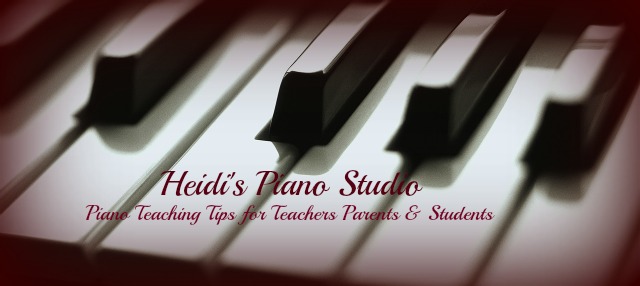To start out the seminar Thomas first gave a brief overview of score preparation and practice tips that he had covered in a previous seminar regarding score preparation and tempo.
Score Preparation -
- Add fingering
- Divide into sections and number (or name) them
Tempo Grid Metronome - Set specific metronome goals
- Slow Tempo
- Set Specific Standards (Measures 5-8 Slow Hands Separate @ X Tempo, then Hands Together)Medium Tempo
- Medium Tempo
- Exaggerate dynamics, articulation, and phrasing
- Fast Tempo
- Less repetition of small sections, more focus on larger sections and continuity
I often start out beginners with FERN practice steps, (F=Fingering, E=Expression, R=Rhythm,
N=Notes. BAPDARP provides a more specific tool to encourage more expression and artistry in their playing when their pieces become more complex than the short primer-level melodies. BAPDARP is the acronym for this checklist of practice goals. It is most effective when you focus on small sections.
Following are the BAPDARP principles highlighted in red along with lecture notes and ideas that came to me during the presentation.
Balance - consider the melodic tone, the non-melodic tone in various layers, chord voicing and clarity.
- If students are having difficulty bringing out the top melody note of chordal pieces, have them separate the blocked chord, playing the highest note loud and long first with the other notes played piano and short with a bit of delay. Gradually narrow the rhythmic gap as they play with finger independence and proper voicing.
- Elephant vs. Mouse analogy with younger students
- Use a picture analogy, Do you see how the red pops against the pale gray in this picture on the wall?
Articulation - students should understand the length, attack, and release speed of every note.
- Does the attack match the character of the piece?
- Play staccato as if your life depended on you getting out of the keys.... there's an alligator in the water!
- Have students repeat the staccato sound until they get it right- sharp and crisp. Don't settle for good, get better than best.
- Legato weight transfer is like a slithering snake.
- Popcorn vs Hot Fudge
Phrasing - students should know where a phrase begins and ends and where the peak is.
- Where does the phrase begin and end? Students sometimes mistake short musical ideas as the phrase.
- Look for cadence points.
- Where is the harmonic tension and release?
- The climax or high point of the phrase is the latest possible, harmonic tension with metrically strong placement. (I like to have them draw a heart or star above it.) Students sometimes mistake a higher note near the beginning, focus more on the end. The punch line of the joke is not at the beginning!
- To facilitate phrase shaping have students write numbers above the phrase to show the building up to the high point (1,2,3,4,5,etc.) and then back down (4,3,2,1).
Dynamics - consider how wide contrasts need to be and nuances within the range.
- Dynamic Dictation Exercise- Record them playing and have them listen and dictate they dynamics that they hear. Are the dynamic contrasts and changes big enough that they can hear it?
- Dynamic Prep - Place hand on the fallboard and gradually arm weight pressure then reduce as you count up to 5 and then back down.
Architecture - students should understand the structure of the piece and the overall climax.
- Outline the overall form
- Examine transitions between sections. Experiment with pacing and dynamics.
- When is there a change in character?
- Where is the overall climax? Use a story to make it memorable. Where did the bunny get hit by the car? Where is the dragon slain?
Rubato - consider how pacing conveys phrase, character, and mood and what is appropriate to style.
- Changes should be gradual
- Practice counting aloud accelerando and then ritardando before playing it on the piano
1 2 3 4 5 6 7 8 9 10 9 8 7 6 5 4 3 2 1
Pedal - students should understand the many levels of pedal available and when to use them.
- Be aware of the room acoustics and adjust the pedal accordingly.
- The depth of the pedal is from shallow to deep, not just all or none. I imagine skimming the surface vs. dipping toes in the water vs. foot soaking.
If "Bapdarp" is a bit of a tongue twister for your student to remember, I thought you could also call it BAD RAPP. In former centuries piano students might have gotten a BAD RAPP on the knuckles from their teacher if they weren't doing BAPDARP!














No comments:
Post a Comment